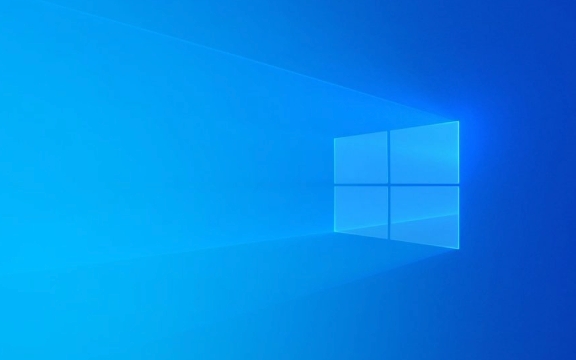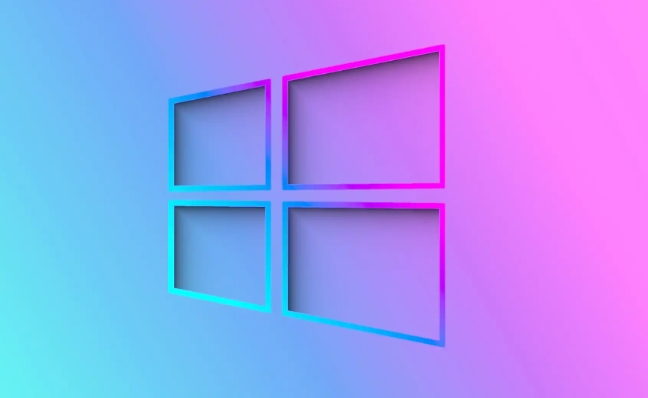How to Properly Clean Your Computer Inside and Out
Jul 28, 2025 am 02:59 AMTurn off and unplug all power sources to ensure safety; 2. Use a microfiber cloth to dip it in appropriate amount of water or alcohol to clean the outer surface to avoid direct spraying of liquid; 3. Use compressed air, soft brushes and cotton swabs to clean the internal dust, focus on cleaning the radiator and fan, and never use a vacuum cleaner; 4. Keep the environment clean and maintain it regularly and simply to prevent dust from accumulation. Correct cleaning of the computer can significantly improve performance, reduce the risk of overheating and extend the life of the equipment. Be sure to power off, handle it gently and use the right tools during operation. The equipment will run more quietly and stably after the entire process is completed.

Keeping your computer clean — both inside and out — is essential for maintaining performance, preventing overheating, and extending its lifespan. Dust buildup, grime on the exterior, and dirty components can all lead to hardware issues over time. Here's how to clean your computer properly, safely, and effectively.

1. Turn Off and Unplug Everything
Before you start cleaning, shut down your computer completely and unplug it from the power source. For laptops, remove the battery if possible (though most modern laptops have non-removable batteries). This step is critical for your safety and to avoid damaging internal components.
Also, disconnect all peripherals — keyboard, mouse, monitor, etc. — so you can clean them thoroughly.

2. Clean the Exterior Surfaces
Start with the outside. Dust, fingerprints, and spills can make your computer look old and grimy.
- Use a microfiber cloth slightly dampened with water or a 50/50 mix of distilled water and isopropyl alcohol (70%).
- Wipe down the case, monitor, keyboard, and mouse. Avoid spraying liquid directly onto the device — always apply it to the clothes first.
- For stubborn grime on plastic or metal surfaces, gently rub with the damp clothes, then dry immediately.
- Avoid abrasive cleaners, ammonia-based products (like Windex), or paper towels, which can scratch screens or leave lint.
Tip: For keyboard keys, use a cotton swab dipped in alcohol to clean around the edges, or use compressed air to blow out debris.

3. Clean Inside the Computer (Desktop or Laptop)
Opening your computer requires care, but it's worth it every 6–12 months, especially if you're in a dusty environment.
What You'll Need:
- Compressed air canister
- Soft brush (like a clean paintbrush)
- Cotton swabs
- Isopropyl alcohol (90% or higher for electronics)
- Anti-static wrist strap (optional but recommended)
Steps:
- Open the case (desktop) or access panel (laptop). Refer to your device's manual if you're unsure.
- Use compressed air to blow dust off components like the motherboard, power supply, RAM, and GPU. Hold fans in place with a finger or toothpick while blowing air to prevent overspinning.
- Focus on heatsinks and fan blades — these collect the most dust.
- For stubborn dust, gently brush with a soft, dry brush.
- Use a cotton swab lightly dampened with isopropyl alcohol to clean around tight spots or connectors.
- Let any damp areas dry completely before reassembling.
Important: Never use a vacuum cleaner — it can generate static electricity and damage sensitive electronics.
4. Maintain Cleanliness Over Time
Prevention is easier than deep cleaning:
- Keep your computer in a dust-free area.
- Use a desk with good airflow — avoid placing it on carpets or in enclosed spaces.
- Consider using dust filters on intake fans (for desktops).
- Clean your keyboard and screen weekly with a dry microfiber clothes.
Cleaning your computer doesn't take long, but it makes a big difference. A well-maintained system runs cooler, quieter, and more reliable. Just remember: power off, go gentle, and use the right tools.
The above is the detailed content of How to Properly Clean Your Computer Inside and Out. For more information, please follow other related articles on the PHP Chinese website!

Hot AI Tools

Undress AI Tool
Undress images for free

Undresser.AI Undress
AI-powered app for creating realistic nude photos

AI Clothes Remover
Online AI tool for removing clothes from photos.

Clothoff.io
AI clothes remover

Video Face Swap
Swap faces in any video effortlessly with our completely free AI face swap tool!

Hot Article

Hot Tools

Notepad++7.3.1
Easy-to-use and free code editor

SublimeText3 Chinese version
Chinese version, very easy to use

Zend Studio 13.0.1
Powerful PHP integrated development environment

Dreamweaver CS6
Visual web development tools

SublimeText3 Mac version
God-level code editing software (SublimeText3)
 How to deploy and maintain a website using PHP
May 03, 2024 am 08:54 AM
How to deploy and maintain a website using PHP
May 03, 2024 am 08:54 AM
To successfully deploy and maintain a PHP website, you need to perform the following steps: Select a web server (such as Apache or Nginx) Install PHP Create a database and connect PHP Upload code to the server Set up domain name and DNS Monitoring website maintenance steps include updating PHP and web servers, and backing up the website , monitor error logs and update content.
 How to use Pagoda Panel for website repair and maintenance
Jun 21, 2023 pm 03:19 PM
How to use Pagoda Panel for website repair and maintenance
Jun 21, 2023 pm 03:19 PM
In the current Internet era, websites have become an important means for many companies to display and promote themselves. However, it is inevitable that some unexpected situations will cause the website to be inaccessible or have limited functions. At this time, the website needs to be repaired and maintained. This article will introduce how to use Pagoda Panel for website repair and maintenance. 1. Introduction to Pagoda Panel Pagoda Panel is a website management software running on a Linux server. It can help users quickly build a Web environment on the server operating system. The Pagoda panel integrates numerous functional modules
 Write easy-to-maintain Golang stored procedures
Feb 24, 2024 pm 08:27 PM
Write easy-to-maintain Golang stored procedures
Feb 24, 2024 pm 08:27 PM
How to write maintainable stored procedures in Golang In Golang, if you want to write maintainable stored procedures, you first need to understand the concept of stored procedures and how to implement them in Golang. A stored procedure is a reusable block of code stored in a database that contains a series of SQL statements. Stored procedures simplify code, improve performance, and encapsulate business logic. This article will introduce how to write maintainable stored procedures in Golang and provide specific code examples. 1. Connect to the database first
 Optimizing PyCharm annotations: improving code maintainability
Feb 19, 2024 pm 07:37 PM
Optimizing PyCharm annotations: improving code maintainability
Feb 19, 2024 pm 07:37 PM
Comments play a vital role in the process of writing code. It not only helps other developers understand our code, but also makes it easier to review the code logic during future maintenance and optimization. As a powerful Python integrated development environment, PyCharm provides rich and practical annotation functions. This article will introduce how to use annotations rationally in PyCharm to make our code easier to maintain. 1. Single-line comments in Python, single-line comments start with "#", it can be
 Code refactoring experience and suggestions in Java development
Nov 22, 2023 pm 08:12 PM
Code refactoring experience and suggestions in Java development
Nov 22, 2023 pm 08:12 PM
In Java development, code refactoring is a very important link. It can help us improve code quality, reduce code redundancy, and improve maintainability and performance. This article will share some experiences and suggestions on code refactoring, hoping to be helpful to Java developers. Determine the goals of refactoring Before refactoring code, you first need to clarify what the goals of refactoring are. Is it to improve code readability? Or is it to improve performance? Or is it to fix bugs? Clear goals can help us refactor in a more targeted manner instead of blindly making changes.
 Update and maintenance strategy for Golang function library
Apr 18, 2024 pm 04:33 PM
Update and maintenance strategy for Golang function library
Apr 18, 2024 pm 04:33 PM
The update and maintenance strategy of Go function libraries is crucial to system stability. The following best practices provide guidance: Update strategy: Automatic updates: Use GoModules or other tools to automatically update dependencies. Manual updates: Check regularly and update to new versions manually. Maintenance strategy: Version locking: Use the -u flag when updating dependency versions to avoid accidental updates. Periodic auditing: Use golist-u to check for updates and audit dependencies. Library forks: For critical libraries, consider creating your own fork to gain more control. By using GoModules, continuous integration testing, and dependency management, libraries can be efficiently kept updated and maintained.
 Impact and response to when PHPcms will stop maintenance
Mar 14, 2024 am 11:12 AM
Impact and response to when PHPcms will stop maintenance
Mar 14, 2024 am 11:12 AM
The impact and response of when PHPcms will stop maintenance. With the continuous development of Internet technology, website construction has become an essential tool for many companies and individuals. In website construction, the content management system (CMS) plays an important role. As a commonly used CMS tool, PHPcms was once very popular. However, as time goes by, the update and maintenance of the PHPcms version gradually decreases or even stops maintenance, which brings a series of impacts to users and developers. This article will explore the impact of PHPcms out of maintenance and provide a
 Recommendations for long-term maintenance of the PHP framework: ensuring the continued success of the project
May 04, 2024 pm 05:15 PM
Recommendations for long-term maintenance of the PHP framework: ensuring the continued success of the project
May 04, 2024 pm 05:15 PM
Best practices for long-term maintenance of PHP frameworks include timely updates, implementation of continuous integration and deployment, code refactoring, unit testing, and monitoring and error reporting. These practices reduce downtime and ensure the health of the code base, thereby promoting the long-term success of the project.







